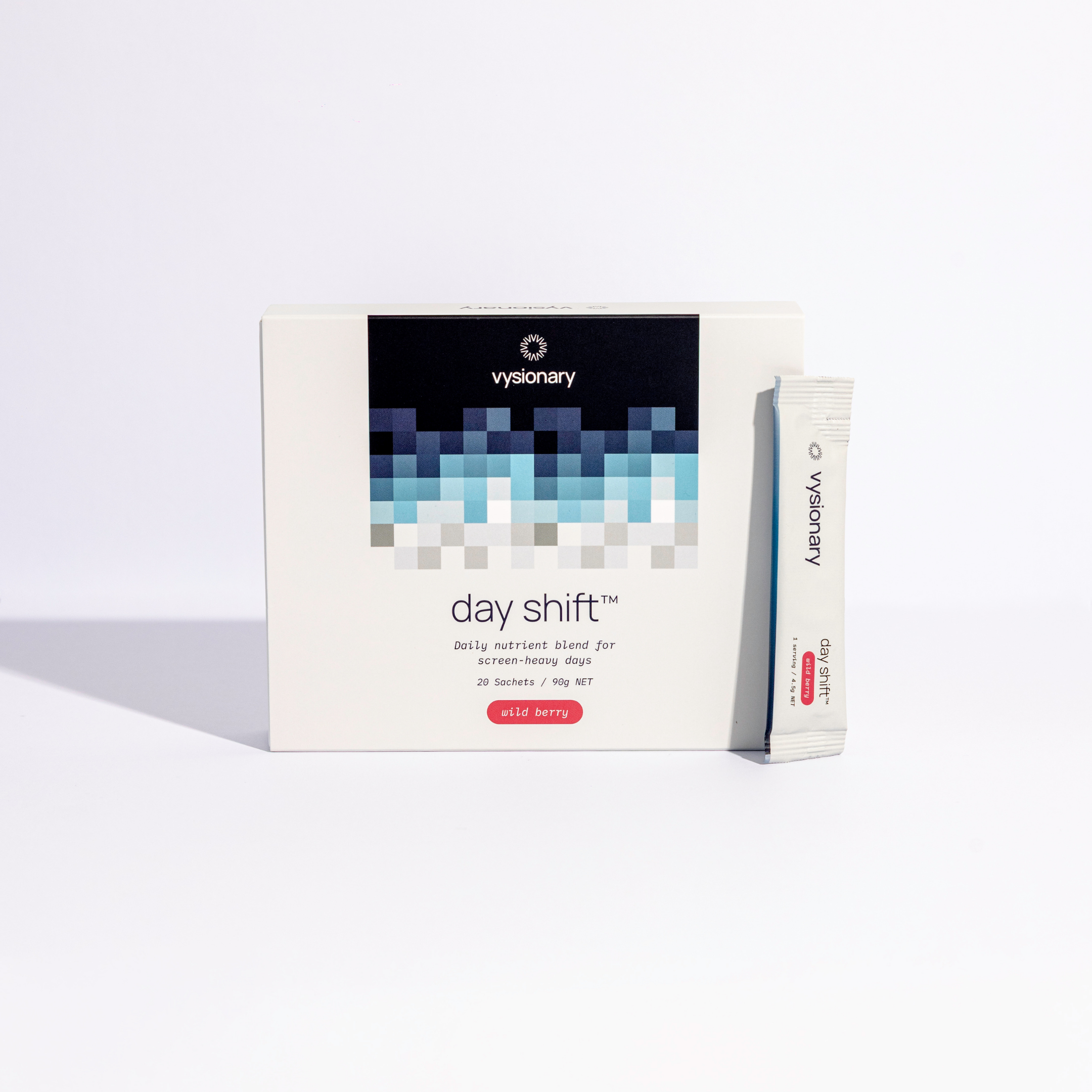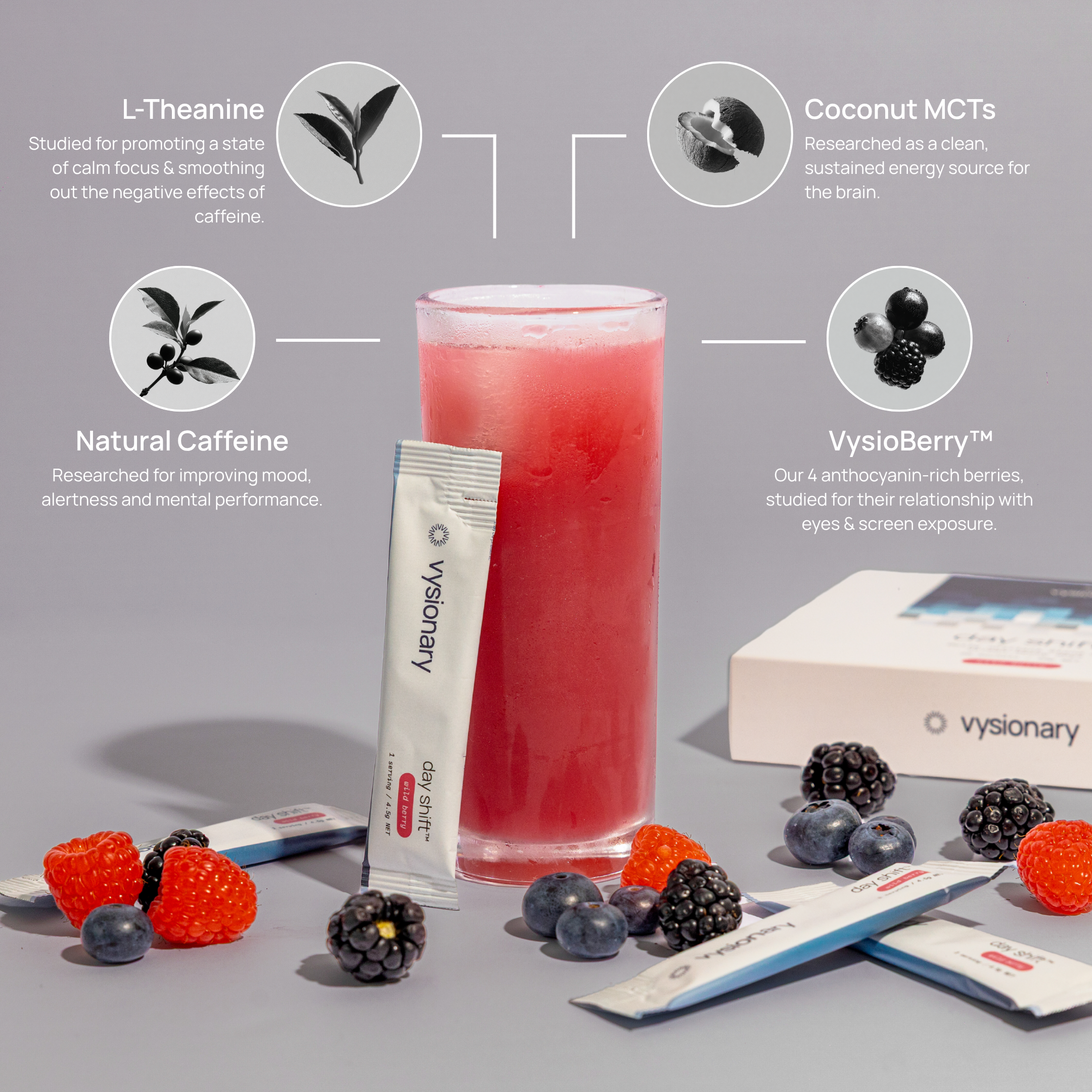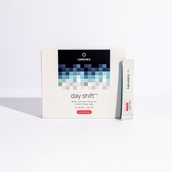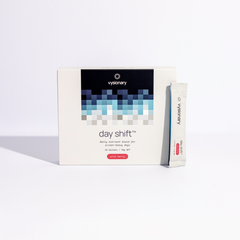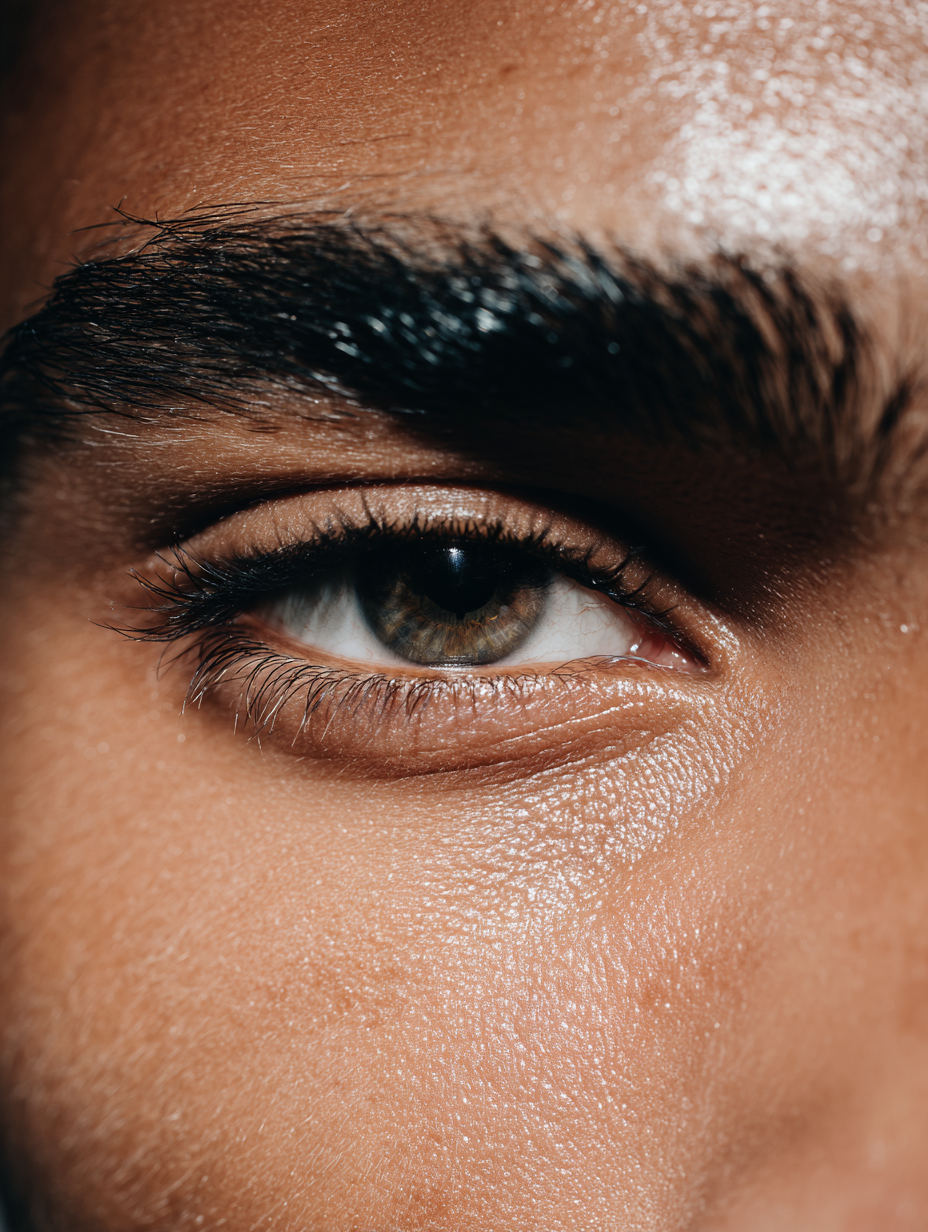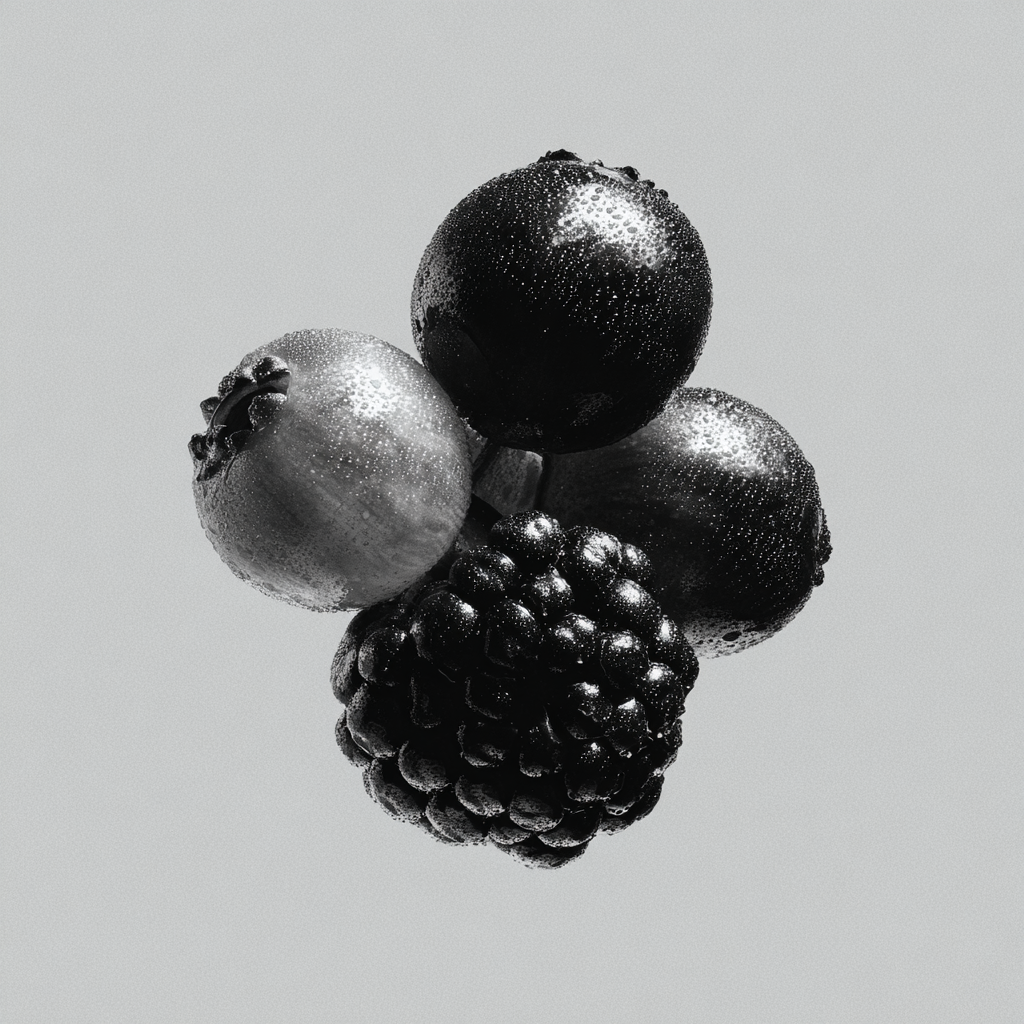Can Anthocyanins Support Screen-Heavy Lifestyles?
July 6 2025
What are anthocyanins?
Anthocyanins are a type of flavonoid, the compounds that give berries, grapes, and some vegetables their deep red, purple, or blue colors.
They’re powerful antioxidants, which means they help protect cells from oxidative stress (Khoo et al., 2017).
That’s important because prolonged screen exposure is known to increase oxidative stress in the eyes (Mathew et al., 2019).
The Science Behind Anthocyanins and Eye Health
Eye Fatigue from Screen Use
Staring at screens for too long can cause eye strain, dry eyes, and blurred vision. Human trials have shown that anthocyanins can help.
One study found that just 50 mg of blackcurrant anthocyanins daily, taken for four weeks, significantly reduced eye fatigue and improved focus after screen use (Nakaishi et al., 2014).
Another study showed that the same dose reduced symptoms like dryness and irritation. Participants also had better visual clarity after working on screens (Matsumoto et al., 2006).
Night Vision and Low Light Adjustment
If you’ve ever gone from a bright screen to a dark room, you know the struggle of adjusting your eyes.
In one human study, anthocyanins helped improve dark adaptation after just one dose (Matsumoto et al., 2006).
This benefit is especially relevant for late-night work or switching between lighting environments.
Age-Related Visual Decline
While much of the anthocyanin research focuses on short-term visual performance, some long-term studies point to broader protective effects.
For instance, regular blueberry consumption has been linked to a lower risk of age-related macular degeneration, a leading cause of vision loss.
Researchers believe anthocyanins play a key role here thanks to their antioxidant power (Kalt et al., 2017).
Myopia in Young People
With screen time increasing among teens, so is the rate of myopia.
A recent study found that adolescents with higher anthocyanin intake had lower odds of developing nearsightedness.
The more berries and dark fruits they consumed, the better the results (Fan et al., 2024).
Supporting Blood Flow in the Eyes
Healthy eyes need good blood flow.
Multiple studies show that anthocyanins can improve circulation to the retina and other parts of the eye (Mathew et al., 2019).
This could play a role in preventing or slowing the progression of diseases like glaucoma.
References
Ghosh, D., et al. (2006). Anthocyanins and anthocyanin-rich extracts: role in food, beverage and medicinal colors. Food Chemistry, 95(4), 509–523.
Matsumoto, H., et al. (2006). A new anthocyanin-rich berry extract improves dark adaptation and visual function in healthy adults. Journal of Nutritional Science and Vitaminology, 52(2), 105–110.
Nakaishi, H., et al. (2014). Effects of blackcurrant anthocyanins on visual fatigue induced by visual display terminal tasks. Journal of Nutritional Science and Vitaminology, 60(3), 161–168.
Kalt, W., et al. (2017). Anthocyanin intake and risk of age-related macular degeneration in women. American Journal of Clinical Nutrition, 106(3), 836–843.
Khoo, H. E., et al. (2017). Anthocyanidins and anthocyanins: colored pigments as food, pharmaceutical ingredients, and the potential health benefits. Food & Nutrition Research, 61(1), 1361779.
Mathew, B., et al. (2019). Therapeutic Effects of Anthocyanins for Vision and Eye Health. Molecules, 24(18), 3311.
Fan, X., et al. (2024). The association between anthocyanin intake and myopia in adolescents: a cross-sectional study of NHANES. Frontiers in Pediatrics, 12, 1503926. https://doi.org/10.3389/fped.2024.1503926


